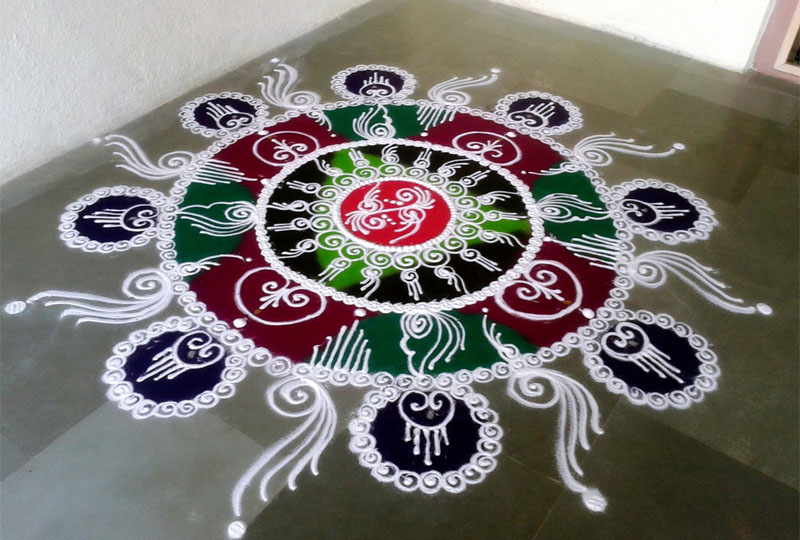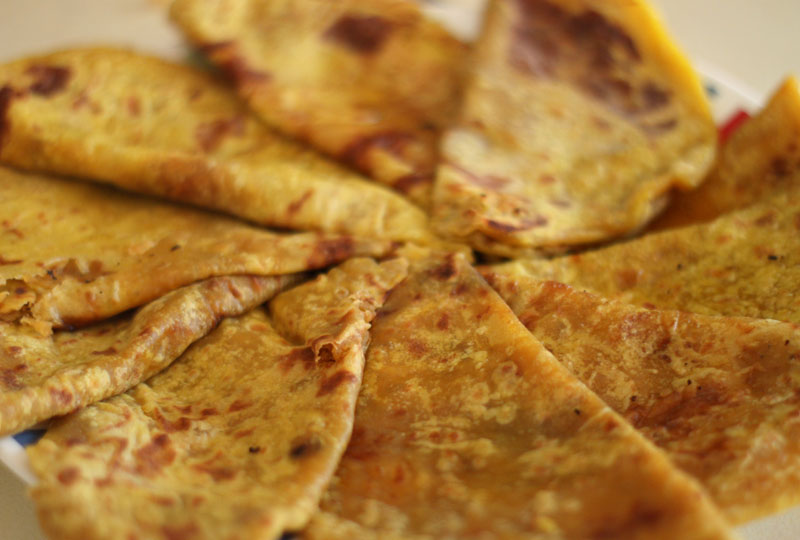Gudi Padwa traditional new year for Marathi Hindus.
Gudi Padwa is a spring-time festival that marks the traditional new year for Marathi Hindus. It is celebrated in and near Maharashtra on the first day of the Chaitra month to mark the beginning of the New year according to the lunisolar Hindu calendar. The word पाडवा (padava) or पाडवो (padavo) or पड्ड्वा/पाड्ड्वो (paddava/paddavo) comes from the Sanskrit word प्रतिपद or प्रतिपदा (pratipada) in Sanskrit, which refers to the first day of a lunar fortnight. The festival is observed with colorful floor decorations called rangoli, a special Gudhi flag (garlanded with flowers, mango and neem leaves, topped with upturned silver or copper vessel), street processions, dancing and festive foods.
Gudi means flag, erect flag on the houses as part of celebration in Maharashtra where its mainly celebrated. The word pāḍavā is derived from the Sanskrit word pratipad for the first day of each fortnight in a lunar month i.e. the first day on which the moon appears after the so-called “new moon” day (amavasya) and the first day after the full moon. A Gudhi is also hoisted on this occasion giving this festival its name. The term padva or padavo is also associated with balipratipad the third day of Diwali which is another celebration that comes at the end of the harvesting season.
Celebrations
The day of Gudi Padwa starts with the cleaning ritual, in which the house is fully cleaned (in case of villages, it is then covered with fresh cow-dung). Thereafter, women and children indulge in the drawing as well as coloring of intricate rangoli designs on the doorsteps. Usually, vibrant colors are chosen for the rangoli, in keeping with the spirit of the festival. Every member of the family wears new clothes and eats soonth panak and chana usal, the specialties of the day.

Other delicacies made on Gudhi Padwa festival include Shrikand and Poori. In the earlier days, family members used to start the day by eating the leaves of neem tree. However, the tradition is not as rigidly followed these days. Usually, people consume a paste of neem leaves (combined with ajwain, jaggery and tamarind). The leaves as well as the paste are believed to cleanse blood and toughen the immune system.

Maharashtrian families also make many other festive dishes, such as shrikhand and Poori or Puran Poli on this day.




[…] Check Out : Gudi Padwa is a spring-time festival that marks the traditional new year for Marathi Hindus […]
[…] Also Check: Gudi Padwa is a spring-time festival that marks the traditional new year for Marathi Hindus […]